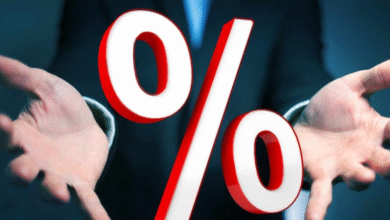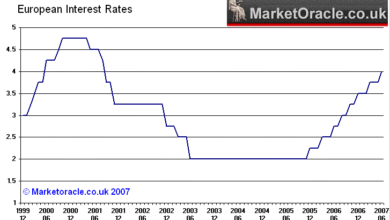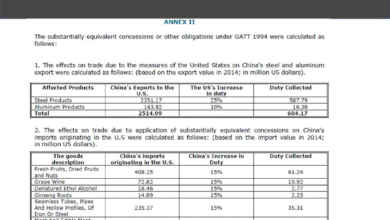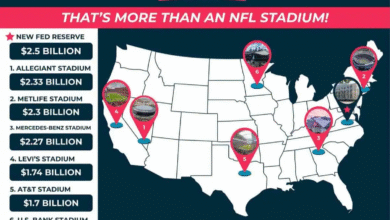UK India Free Trade Agreement Boosts Bilateral Trade
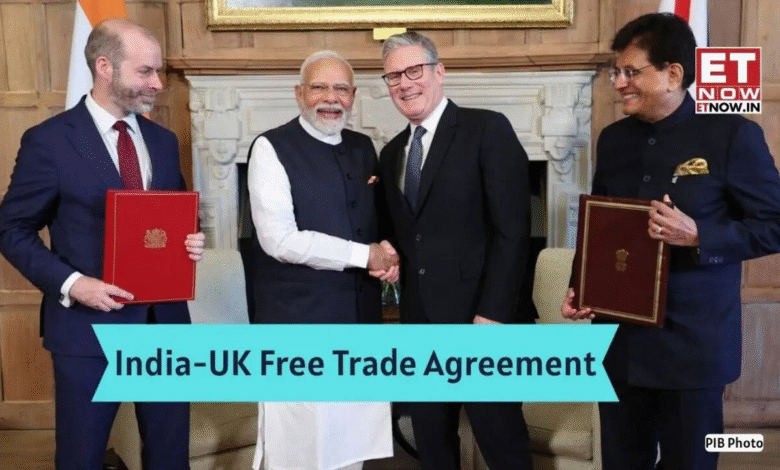
The UK India Free Trade Agreement marks a significant development in UK India trade relations, with expectations of boosting bilateral trade by over $34 billion annually in the long term. This historic deal, signed by Indian Prime Minister Narendra Modi and UK Prime Minister Keir Starmer, aims to lower tariffs on a range of goods, including textiles and automobiles, thus opening up new markets for both economies. By removing trade barriers, the agreement is poised to deliver substantial UK India FTA benefits, driving economic growth and enhancing living standards in both nations. With projections indicating a potential £25.5 billion rise in trade by 2040, the UK India trade increase is anticipated to create a domino effect of opportunities for businesses and consumers alike. As the fifth and sixth largest economies in the world come together through this bilateral trade agreement, the future looks bright for both countries.
The recently established trade pact between the United Kingdom and India serves as a monumental stride towards strengthening economic ties between these two dynamic nations. This favorable arrangement is set to reduce tariffs significantly on various exports and imports, fostering a collaborative atmosphere for both manufacturers and consumers. The agreement not only exemplifies the growth trajectory of UK India trade relations but also highlights the competitive advantages that both countries can gain by engaging more closely in bilateral trade activities. With the potential for considerable economic enhancement and job creation, this trade relationship represents a vital link for UK investors and Indian enterprises alike. Overall, this agreement is a pivotal turn in forging deeper economic connections in an increasingly globalized market.
The Significance of the UK India Free Trade Agreement
The UK India Free Trade Agreement (FTA) is poised to transform the economic landscape of both nations. By eliminating tariffs on nearly all goods traded, the agreement addresses long-standing barriers that have hindered trade growth, encouraging investment and collaboration. Leaders of both countries view this historic pact as not merely an economic instrument but as a reaffirmation of their commitment to fostering strong bilateral relations, which encompass cultural, technological, and economic exchanges.
As the world’s fifth and sixth largest economies, the potential for growth stemming from this FTA is immense. Economists project a boost to bilateral trade by £25.5 billion annually by 2040, which speaks volumes about the future of UK-India trade relations. The agreement is not only beneficial in terms of monetary gain but also serves as a strategic alignment between the two countries, enhancing their positions on the global economic stage.
Exploring Benefits of UK India Trade Relations
The benefits arising from improved UK India trade relations are manifold. With approximately 92% of UK exports to India experiencing tariff elimination or significant reduction, British businesses can now access one of the world’s fastest-growing markets more competitively. For Indian exports, nearly 99% will be tariff-free, facilitating increased access to the expansive UK market, thus paving the way for enhanced opportunities for exporters on both sides.
Common sectors poised for growth include textiles, alcohol, and automotive, with particular mention of the drastically reduced tariffs on UK spirits, which will see duties halved within a decade. This not only opens the doors for UK suppliers but also allows Indian consumers access to a wider range of affordable imported goods, leading to enhanced consumer welfare and more substantial economic activity.
Impact of the UK India FTA on Economic Growth
The anticipated economic growth resulting from the UK India FTA holds promise for both nations as they strive to rebound from global economic uncertainties. British economists predict an annual £4.8 billion boost to the UK economy, underscoring the potential for job creation and wage increases across several sectors. On the flip side, India’s gross domestic product is also set for a positive trajectory, benefiting different industries as market access improves.
Moreover, this FTA serves as a catalyst for further economic reforms within India, especially as sectors like textiles and engineering gear up for increased demand in the UK. The trade agreement not only enhances economic ties but provides India with leverage in future negotiations with other developed economies, marking a strategic step towards greater global economic engagement.
Long-Term Prospects of UK India Bilateral Trade Agreement
Looking towards the future, the long-term prospects of the UK India bilateral trade agreement are notably optimistic. Analysts foresee an undeniable increase in overall trade volume as enhanced market access fosters greater commerce. With both countries reaffirming their dedication to this partnership, it is likely that future negotiations will build upon the momentum created by this landmark agreement, potentially paving the way for additional sector-specific pacts.
Furthermore, as the trade surplus with the UK continues to grow for India, this agreement provides a solid foundation for expanding trade relations with other countries. The ability to negotiate from a position of strength not only enhances India’s economic standing but also helps the UK solidify its status as a key player in Asia, especially in a post-Brexit world. Ensuring that both nations capitalize on this opportunity will be crucial to their sustained economic collaboration.
The Role of Tariff Reductions in Trade Growth
Tariff reductions play a pivotal role in stimulating trade growth between the UK and India as outlined in the landmark FTA. The significant decrease in average tariffs on UK goods from 15% to 3% demonstrates a shift towards more open trade practices that promote increased exports. Reducing trade barriers is fundamental in enhancing competitiveness and elevating the standard of living for consumers in both nations.
India’s response to these reductions has been equally encouraging, as the easing of tariffs on sectors such as textiles, which represent a significant portion of its exports, enables Indian businesses to thrive in the UK market. This reciprocal arrangement not only aims to balance trade but enhances the interdependence of both economies, ultimately leading to greater stability and growth.
Potential Challenges in Finalizing Trade Agreements
While the UK India FTA presents numerous benefits, potential challenges remain as both nations implement the terms of the agreement. Issues surrounding tariff schedules and regulatory divergences may still create barriers that hinder seamless trade operations. Ensuring that both countries adhere to their commitments while fostering cooperation in resolving these challenges will be essential to fully leveraging the potential of this agreement.
Furthermore, geopolitical factors, such as changes in global trade dynamics and domestic political considerations, could also influence the effectiveness of this trade pact. For its success, ongoing dialogue between both governments will be necessary to navigate these complexities and strengthen the foundations of their economic relationship.
The Influence of Political Relations on Trade Agreements
Political relationships between nations significantly influence trade agreements, and the UK India FTA is no exception. The leadership of Narendra Modi and Keir Starmer has fostered a conducive environment for negotiations to flourish, allowing both governments to prioritize trade as a means to strengthen bilateral ties. The underlying political support for this agreement reflects a broader strategy of each country seeking to cultivate stronger partnerships with key global players.
Given the complexities of international relations, both countries must remain vigilant in maintaining a cooperative stance, even amidst challenges. With ongoing geopolitical tensions that might arise, it’s crucial for the UK and India to leverage this FTA as a foundation for consistency, setting an example for future trade agreements globally.
Leveraging Trade Agreements for Global Market Positioning
The strategic positioning of the UK India FTA within the global trade landscape cannot be understated. As both nations seek to expand their market reach, leveraging this agreement will be critical in enhancing their negotiating power with other trading partners, such as the United States. By showcasing the benefits and successful implementation of this FTA, the UK can present itself as a viable partner for countries seeking trade agreements with India.
Moreover, the strengthening of relations through this FTA positions both nations favorably in an increasingly competitive global market. With trade flows likely to increase significantly, this agreement provides an opportunity to diversify economic partnerships and reduce reliance on any single market, ultimately promoting resilience in each country’s trade strategy.
The Future of UK India Economic Collaboration
As the UK India FTA sets the stage for enhanced economic collaboration, future partnerships may extend beyond trade into investment and technology transfer. The success of this agreement can signal the potential for comprehensive economic collaboration in various sectors, leading to shared prosperity and mutual growth. Sectors such as technology, education, and healthcare are likely candidates for deeper cooperation.
Furthermore, both nations can benefit from sharing best practices and experiences in trade and business practices, which could yield significant improvements in productivity and innovation. As they move forward, the commitment to collaboration should remain steadfast to ensure that the fruits of this partnership are felt in both economies for years to come.
Frequently Asked Questions
What is the UK India Free Trade Agreement and its significance?
The UK India Free Trade Agreement (FTA) is a bilateral trade agreement aimed at boosting trade relations between the U.K. and India. It significantly lowers tariffs on key goods, expected to enhance bilateral trade by £25.5 billion annually by 2040, marking a historic boost for both economies.
What are the benefits of the UK India FTA for businesses?
The UK India FTA benefits businesses by reducing tariffs on 92% of U.K. goods exported to India and nearly 99% of Indian goods sent to the U.K. This will lower costs, increase market access, and promote economic growth, enhancing competitiveness for companies in both countries.
How will the UK India Free Trade Agreement impact economic growth?
The UK India Free Trade Agreement is projected to boost economic growth by generating an additional £4.8 billion in British economic output annually. It enhances trade opportunities, which can lead to increased investment and job creation in both nations.
What sectors will benefit the most from the UK India trade relations?
Sectors such as textiles, jewelry, and agriculture are expected to benefit significantly from the UK India trade relations due to improved market access and reduced tariffs, promoting employment and industrial growth in India.
Will the UK India FTA affect prices for consumers?
Yes, the UK India Free Trade Agreement is designed to lower prices for consumers by reducing tariffs on a variety of goods. This will result in decreased costs for products like Scotch, gin, and automobiles, ultimately enhancing the purchasing power of consumers.
How does the UK India Free Trade Agreement position the U.K. in global trade?
The UK India Free Trade Agreement positions the U.K. as a significant partner in India’s trade, especially as both countries seek to strengthen their negotiation power with other global partners, including the U.S. It also reflects the U.K.’s strategy to engage with emerging markets like India.
What are the tariff reductions included in the UK India FTA?
The UK India FTA includes substantial tariff reductions: average tariffs on U.K. exports to India will decrease from 15% to 3%, while Indian imports to the U.K. will see near-total tariff elimination, fostering a more integrated and mutually beneficial trading environment.
What steps were taken to negotiate the UK India Free Trade Agreement?
The UK India Free Trade Agreement was finalized after three years of intense negotiations addressing crucial issues such as visa regulations, tariff reductions, and tax breaks, underscoring the commitment of both nations to enhance trade relations.
How will temporary Indian workers be treated under the UK India FTA?
Under the UK India Free Trade Agreement, temporary Indian workers in the U.K. and their employers will be exempt from social security contributions for three years, easing the financial burden on both parties and encouraging workforce mobility.
What future implications does the UK India trade agreement have?
The UK India trade agreement may serve as a catalyst for further trade discussions between India and other developed economies, while enhancing the U.K.’s position in future negotiations, particularly with the U.S., as countries seek to strengthen global economic ties.
| Aspect | Details |
|---|---|
| Bilateral Trade Boost | Expected annual boost of over $34 billion due to FTA. |
| Key Leaders Involved | Indian PM Narendra Modi and UK PM Keir Starmer signed the agreement. |
| Major Goods Affected | Textiles, alcohol, and automobiles with reduced tariffs. |
| Tariff Reductions | 92% of UK goods to India will have reduced or eliminated tariffs, and 99% of Indian goods to the UK will be tariff-free. |
| Jobs and Wages Impact | Expected to increase wages and improve living standards. |
| Economic Growth Projections | UK’s economic output could increase by £4.8 billion annually. |
| Temporary Worker Arrangements | Exemptions from social security contributions for Indian workers in the UK for three years. |
| Significance | It’s one of the first trade agreements India has signed with an advanced economy. |
Summary
The UK India Free Trade Agreement marks a significant milestone in trade relations between the two nations, set to enhance bilateral trade and economic cooperation. By lowering tariffs on a range of goods, the agreement is projected to boost the economy of both countries, providing substantial benefits to various sectors. With an expectation of increasing trade volume and improving market access, the deal is a strategic step towards greater collaboration, paving the way for future trade discussions and partnerships.

